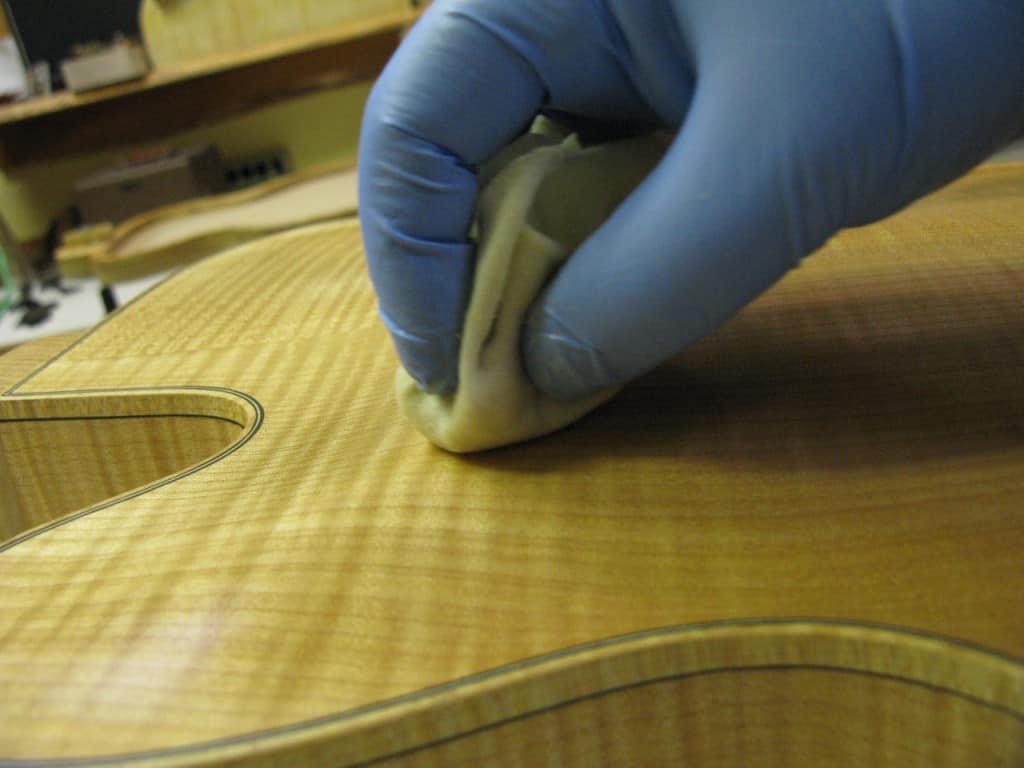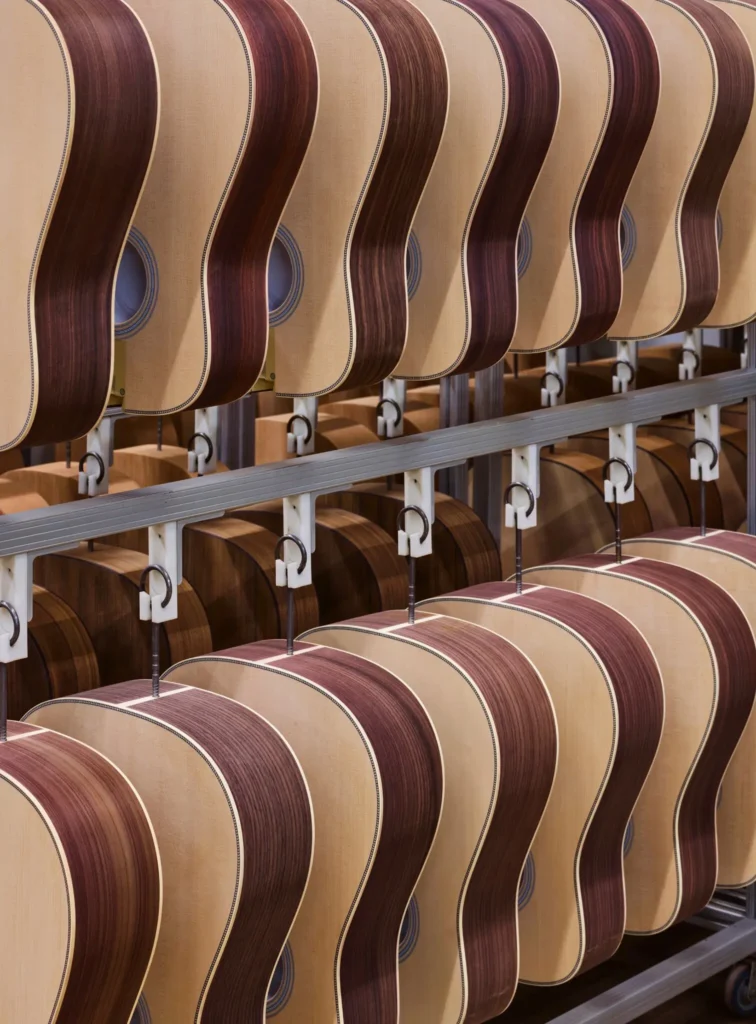Lester William Polsfuss (Les Paul), el “the waukesha magician”.
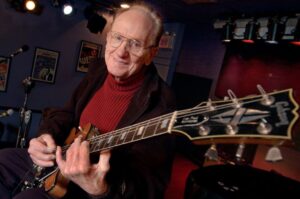
Les Paul is one of the most important figures in the technological evolution applied to music, being among the main and most prominent pioneers in the development of the solid body electric guitar, being his collaboration in the creation of the guitar model marketed by Gibson baptized with his name his most famous and successful contribution.
Currently considered the Les Paul guitar model, along with the Fender Stratocaster as the most popular and acclaimed electric guitar models in history.
Although Les Paul would also stand out for being the precursor of new recording techniques that today are essential and everyday, such as multitrack recording or the development of facer and procrastinate effects. As if all this were not enough, he was also a magnificent guitarist who also innovated guitar techniques that inspired future musicians, popularly known as the Waukesha wizard.
Les Paul was an American with German ancestry born in 1915 in the town of Waukesha in the state of Wisconsin, at the age of eight years old would begin his love for music starting to play the harmonica at the same time he would begin his curiosity for electronics making with only nine years old his first radio receiver, being the music of a guitar one of the first sounds he heard on his radio.
Anyone would have thought that if you play the guitar you could not play the harmonica at the same time but Paul invented a stand for his harmonica that would allow him to play both instruments at the same time and the product is now manufactured based on the original design devised by the guitarist.
At the age of 13, Les Paul was already playing semi-professionally at carnivals as a country musician, often performing in open spaces and having to use a lot of force when playing so that his music could be heard clearly. To solve the problem Les Paul installed a phonograph needle in the bridge of the guitar and with a cable he sent the signal to the speaker of his radio as an amplifier.
He began his professional career after leaving high school forming part of a band of St. Louis in the state of Missouri but in 1934 he moved to Chicago where he used to perform as a jazz musician in different radio stations influenced by his great idol Django Reinhart, forming in 1937 in this city the jazz band Les Paul Trio with which he would move to New York in 1938.
But Les Paul was not satisfied due to the problems derived from the amplification of the guitars with soundboard, such as feedback or feedback generated by the vibrations of an acoustic body also vibrating the microphone installed in the harmonic stage itself.
Something that Paul also wanted was to have a guitar that kept the notes as long as possible, something difficult to achieve with an acoustic instrument because the vibrations of the strings are diluted in the soundboard itself, to solve these problems Les Paul would begin to experiment in his apartment, Paul would install an equivalence of electromagnetic pickups on a center piece of solid wood taken from a fence post. He attached it to a Gibson neck and also incorporated a rudimentary vibrato system.
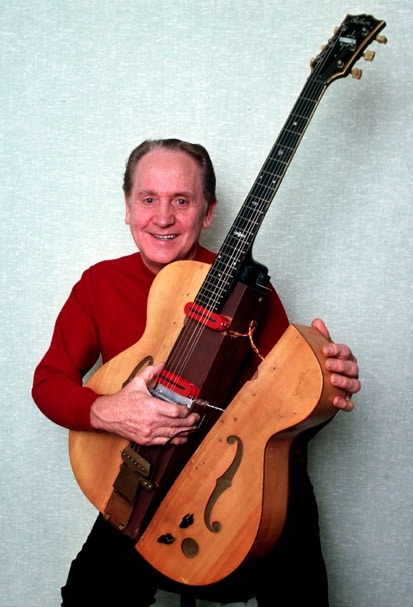
To improve the appearance of the prototype he would install two equal halves of an Epiphone on the sides of the trunk, although the final result is still quite improvable, but we must understand that in the early 40’s nobody had imagined an electric guitar as we know it today. What he did manage to do was to solve the aforementioned problems by installing the pickups in a rigid wooden body, thus avoiding the coupling derived from the resonance and vibrations of an acoustic instrument, on the other hand the sustain was increased by dispensing with a soundboard.
While carrying out his experiments, Les Paul would suffer in 1941 an electric shock that almost took him away, but luckily he survived this shock and moved to Los Angeles in 1943 where he would form a new trio of musicians. Les Paul would use his prototype from its inception in both live and studio performances, finally presenting his design to Gibson in 1946 with the proposal to develop a new model of solid body electric guitar taking his prototype as a reference.
But Gibson’s management only had to order them to let the dogs out of the bag to make Les Paul disappear as soon as possible, convinced that a solid body guitar would never be accepted by the consumer. After Gibson’s refusal, Les Paul decided to build his own recording studio in which he played all the guitar parts on some of his songs, developing in 1948 the hitherto unknown multi-track recording.
That same year pol would suffer a road accident that could have been lethal, because of this accident the elbow of his right arm was practically destroyed, the doctors would inform Les Paul that they could not reconstruct it in consequence the elbow would have to remain in a fixed position. Les Paul indicated to the surgeon the correct angle in which his arm should be to be able to continue playing the guitar, but this would not be the only injury that Les Paul had to endure.
Because of this accident he had to endure serious sequelae in his back, ribs and neck, costing him almost a year and a half to recover. Shortly after recovery, a visionary saw the melodic potential of a solid body electric guitar and introduced his first mass-produced model. That visionary was Leo Fender and his model was the Fender Telecaster.
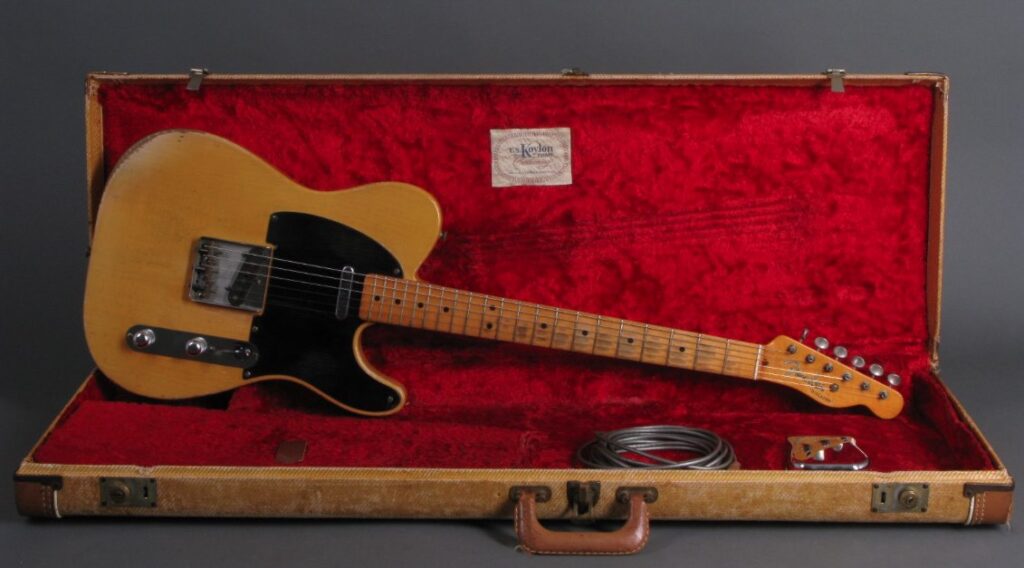
Gibson found the impression of a solid body guitar to be hopeless, squandering the opportunity to be the pioneer in its development and mass production, until Fender started selling like hot cakes in the early 1950s. As a result, Gibson had a radical change of heart when it saw the results of a new competitor.
Gibson contacted Les Paul in 1951 to develop a solidbody guitar, but following the brand’s tradition of creating high-end products, the chief designer who approved the final product would be Ted McCarthy. Paul would contribute the name to the model in question with the intention of promoting the instrument as an experienced guitarist or if it turned out to be a commercial failure the brand could disengage from the model in question by holding Les Paul responsible.
The guitarist had to sign a contract with the brand that prevented him from playing any instrument in public that was not a product manufactured by Gibson, finally the first Gibson Les Paul model was marketed in 1952 with p90 pickups designed by Gibson in 1946, precisely the same year that Paul presented his prototype.
Unsatisfied with the final result, Paul would get the brand to accept some improvements, finally appearing the standard Les Paul in 1958 mounted with its innovative dual coil pickups, being the star quality of these microphones the reduction of parasitic sounds or interference, completing what is considered one of the most perfect models of solid body electric guitar ever made.
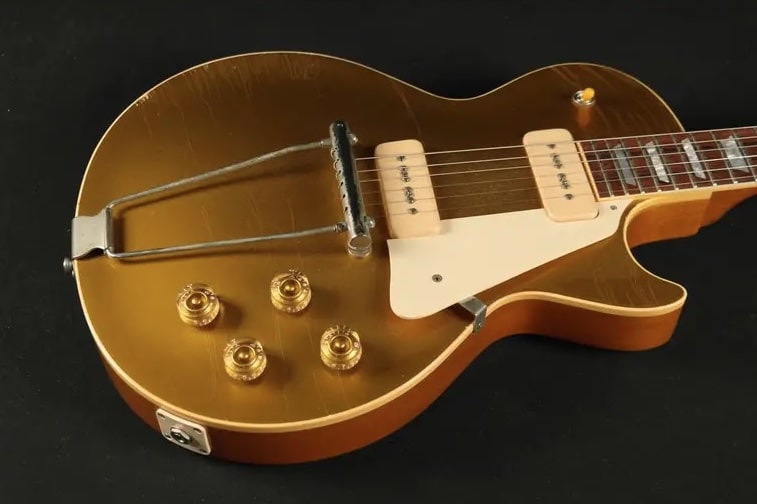
But the standard Les Paul was discontinued in 1960, crushed commercially by the Fender Stratocaster, a lighter, cheaper guitar with vibrato lever, so Gibson modified the Les Paul model in 1961 by adding a vibrato system mounted on a narrower body with a cut away top, thus lightening the weight of the instrument and facilitating at the same time the access to the lower part of the neck, giving birth to the Gibson Les Paul SG, referring the abbreviation SG to its solid body construction.
These important modifications should have been communicated to Les Paul but he was unaware of them until he saw the new model with his name on it on a shop window.
He immediately disowned the new shape and forced Gibson to remove his name from the model, claiming that it did not correspond to his guitar.

Eventually the new guitar would be renamed simply SG and become one of the company’s biggest successes. The Les Paul would return to Gibson’s catalog in 1968 after the widespread demand caused by the widespread use of this model by top artists, ending the Les Paul to be an icon in the development of musical genres such as hard rock and heavy metal although its use is applicable to virtually any melodic genre being this guitar a fundamental part of the sound of many jazz and blues guitarists.
Although Les Paul is mainly known for giving his name to one of the most popular guitars in history, he also enjoyed a brilliant career as a virtuoso musician and guitarist, enjoying several number one hits in the USA, along with his wife Mary Castle.
In 1987 Les Paul underwent heart surgery and after recovering from the operation he returned to the stage despite growing arthritis in his hands and continued to play well into his 80’s, passing away in 2009 at the age of 94.
Les Paul’s one thing he loved in life was to make people happy. Mission accomplished Paul!

